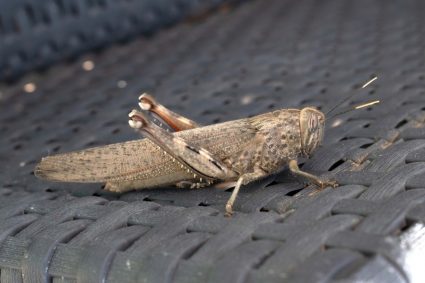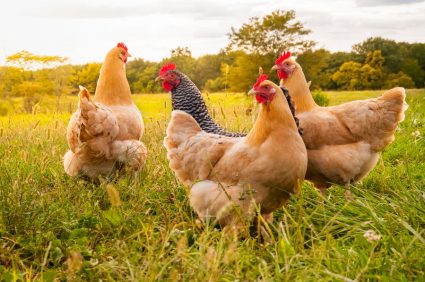
Whether you’re a farmer, gardener, or a wildlife enthusiast, keeping deer out of your food plots can be a constant struggle. Deer are notorious for their voracious appetites and can cause significant damage to crops and gardens. In this comprehensive guide, we’ll explore various strategies to keep deer out of food plots, from physical barriers to repellents and planting strategies.
Keeping deer out of a food plot involves a combination of strategies. This includes setting up physical barriers like electric fencing, using deer repellents such as sprays or ultrasonic devices, planting deer-resistant plants around your plot, and using technology like scare devices. Providing alternative food sources for deer can also help divert them away from your main food plot. Regular monitoring and adjusting your strategies as needed can enhance effectiveness.
Why Keep Deer Out of Food Plots?
Deer intrusion in food plots can have several implications, both for the deer population and the landowner. For deer, the availability of food plots can lead to an increase in their numbers, as they are attracted to the readily available food source. This can result in higher deer densities, which may lead to increased competition for resources, potentially affecting the overall health and survival of the deer population.
For landowners, deer intrusion in food plots can lead to over-browsing and damage to crops, resulting in economic losses. Furthermore, increased deer densities can lead to higher rates of disease transmission among the deer population, which can have negative impacts on the overall health of the herd.
Strategies to Keep Deer Out of Food Plots
Physical Barriers
One of the most effective ways to keep deer out of food plots is by using physical barriers, such as fencing. Electric fencing, in particular, is an effective deterrent. A double-layer fence configuration with an outer single strand of poly-tape and an inner fence with two wires can create a psychological barrier that deters deer from jumping over.
Repellents
Various deer repellents are available on the market, such as sprays, lights, and ultrasonic devices. These repellents can help deter deer from entering your property and causing damage to your food plots. For example, Liquid Fence can be sprayed on a tape strung around the perimeter of your plot to repel deer.
Planting Strategies
Planting deer-resistant plants around the perimeter of your food plot can help deter deer from entering the area. Some examples of deer-resistant plants include sea thrift, wallflowers, iris, sandhill sage, and lupines.
Additionally, providing alternative food sources for deer, such as clover and alfalfa, can help divert deer away from your main food plot. Keep these alternative plots well-maintained to ensure continued fresh growth.
Technology and Innovative Tools
Modern technology has helped create scare devices that incorporate motion, noise, and even electric shock to deter deer from causing damage. These devices can be used to frighten deer from yards, crops, and gardens, but they are most effective when used as soon as damage is detected.
Deer-Resistant Gardens
To create a deer-resistant garden that still supports other wildlife, choose plants that deer are less likely to eat, such as lavender, sage, sweet alyssum, and gaura. Incorporate native plants, provide shelter and nesting areas, add water sources, support pollinators, and avoid using chemical pesticides.
In conclusion, while no method is 100% effective in keeping deer out of food plots, a combination of physical barriers, repellents, planting strategies, and the use of technology can provide the best protection. Regular monitoring of your food plot and adjusting your protection strategies as needed will ensure the best results.
Frequently Asked Questions
What are the benefits of using electric fencing?
Electric fencing is highly effective for deterring deer due to the psychological barrier it creates. Deer, being naturally cautious animals, are less likely to attempt to jump over or go through an electric fence due to the unpleasant shock they receive upon contact. Furthermore, electric fences are relatively easy to install and maintain, making them a practical choice for many landowners.
Are there any natural deer repellents I can use?
Yes, there are several natural deer repellents that you can use. Some examples include garlic, hot pepper spray, and soap. These can be particularly effective when combined with other deterrent strategies, such as physical barriers and planting deer-resistant plants.
How often should I apply deer repellents?
The frequency of application can depend on several factors, including the specific product you’re using, the deer population in your area, and the weather conditions. As a general rule, most deer repellents should be reapplied every 30 days. However, if you’re experiencing heavy rainfall, you may need to apply the repellent more frequently.
Can deer become accustomed to scare devices?
Yes, deer can become accustomed to scare devices over time, particularly if the devices are not regularly moved or varied. Therefore, it’s recommended to use a combination of different scare devices and to change their location periodically to maintain their effectiveness.
What are some examples of native plants that I can use in a deer-resistant garden?
The specific native plants that are deer-resistant can depend on your location. However, some examples that are generally resistant to deer include lavender, sage, and sweet alyssum. These plants can add beauty to your garden while also helping to deter deer.










